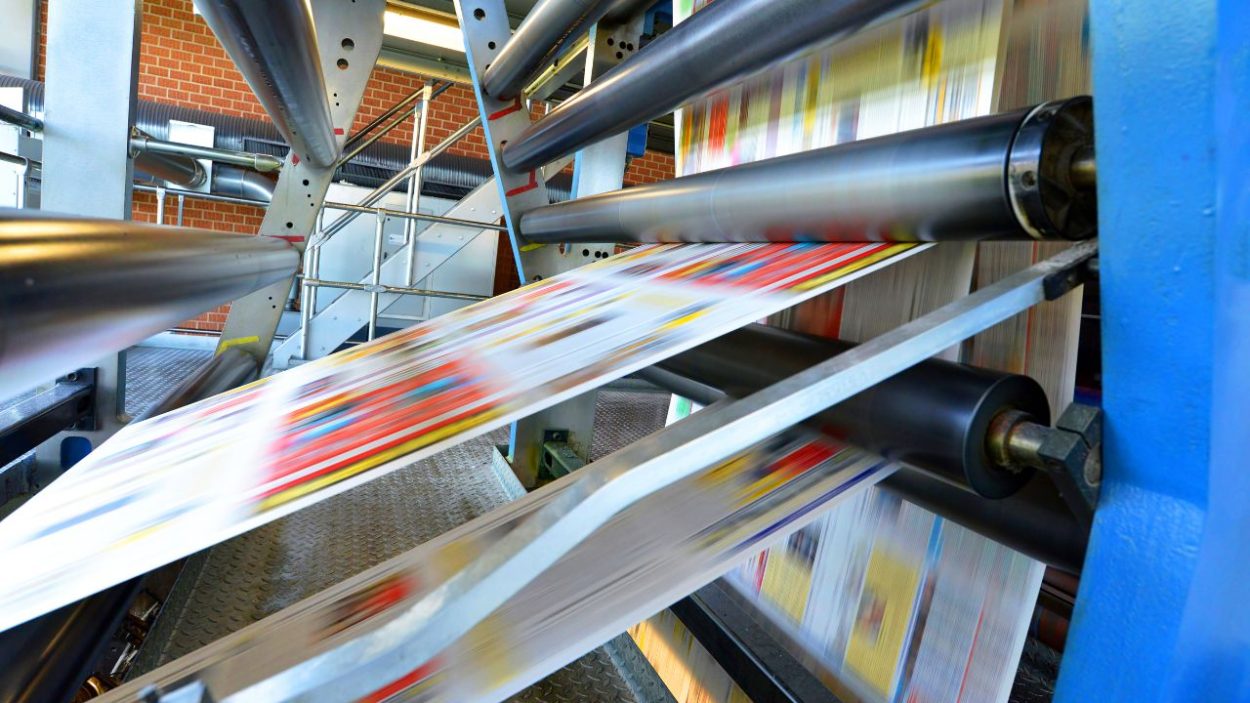How easy it is to publish and print your own book
Do you dream of being an author whose manuscripts are printed as a book?
The internet makes it possible!
Writing a good book, a novel, getting it published so that it actually sits on the shelf of your local bookseller or maybe even sells on Amazon.
Whether you want to fulfil your dream of owning your own book, have your doctoral thesis professionally bound or give a few photo books as a Christmas present. A hardcover book is still something very special – even in the age of e-books.
But now it doesn’t have to remain a dream to have your own book printed. You don’t have to cancel your life insurance to pay dubious micro-publishers to get your book printed.
These tips in a nutshell
In these pages we will show you how to master the path from manuscript to printed book:
File formats, how to turn a Word document into a printable PDF file.
Possible DIN formats of the printed book
How can the cover be designed?
What options are there for having the book bound?
What kind of paper will the book be printed on: grammage, refinement?
What are the advantages of an ISBN number?
Is it possible to earn money with self-publishing?
The way to book printing
You have written a book, a novel, a volume of stories and short stories, a travelogue, a crime novel.
Congratulations!
You have already done the most important work – the writing.
A professional author cannot have so many books printed.
Now you hold your finished manuscript in your hand and would like to see it published. Perhaps you have already given it to relatives, friends and acquaintances to read, who encourage you to have your work printed and published.
Technical developments in recent years have made it possible for you to do the printing and marketing yourself. Of course, this involves costs and further work, but it guarantees that you will actually have your finished book in your hands after a short time.
The hurdles for writers are conceivably low, because special publishers work with digital printing and take care of:
printing (letterpress, digital printing, print on demand)
Publishing
Marketing
Here is a brief guide on how to get your work successfully printed.
The electronic manuscript
Of course, you need to have created content that is printable. No writer will avoid the process of ideating, manuscripting, drafting and editing the text. Enjoy writing until you have a finished masterpiece. The best writers continue to refine their raw text.
It is indispensable to have your text as a file in order to have it printed as a book. If you have written by hand or typewriter, you cannot avoid entering everything again with a text programme.
In the end, the text file must be converted into a printable PDF document (Portable Document File). With a good word processing programme you can save directly in this format.
Which printing process?
The answer to this question is determined by how much money you can invest. And also what print run you are planning.
The best choice in terms of quality is offset letterpress printing. But the modern state of the art offers absolutely high-quality results in digital printing.
If you just want to put out feelers and test whether and how your work sells, the so-called Print On Demand is excellent.
You don’t have to commit to specific print runs, you can even call off single copies if a buyer shows interest.
Currently, this is the easiest way to get your book printed.
Which book format?
Before taking this step, you should carefully compare internet printers. There you will find information on which book formats can be produced and sufficient tips on the size of the PDF file you need to create.
For example, file and page formats differ by a few millimetres due to the final trim. DIN A4 and DIN A5 are the most common and cheapest options.
Good printers offer other special formats, but then the price per book usually increases.
Typography and design
Typography and cover design are very important for good readability and an attractive design. Typography includes, among other things, the choice of typeface, line spacing and the dimensions of the page margins.
Poor page design makes the reader tire quickly and put the book down after a few pages.
The same applies to the cover. The first impression as an eye-catcher and, so to speak, the business card for your work. The cover must convey the content and nature of the text in a nutshell.
Therefore, a funny story requires a different graphic realisation than, for example, a sadly ending love story. If in doubt, seek help from an experienced graphic designer.
You can find favourable offers, for example, on Fiverr.com. There, graphic designers offer the layout for an e-book or PDF from 5 US dollars. It is hardly possible to do it much cheaper and faster. However, you need an advanced knowledge of English, as most providers speak English.
Get it printed on the right paper
The next decision you need to make is about the substrate. For plain text, you should avoid bright white and choose a light cream-coloured paper. The reader’s eyes find this colour more pleasant.
For a travel guide with relatively short text sections and many photos, glossy or matt picture paper is best suited.
The most common grammages, i.e. paper weights, are:
90 g/m² for pure text
120 or 150 g/m² for photo books
Other finishes are possible, but also depend on the technical possibilities of the chosen printer – and of course always involve higher costs.
The right binding
The final step in production concerns the binding of your book. For a novel, you should choose a softcover or a hardcover with perfect binding. This will give you a good look and a long shelf life.
Hardcover, high-quality thread binding or simple perfect binding
Softcover, mainly perfect binding for paperbacks
Short texts, such as a story with 40 to 60 pages, can also be bound with staples. If you have written a manual or technical instructions, a wire ring binding may be considered for better handling in everyday life.
Basically, the following applies to all production steps: Inquire beforehand and seek advice from the printer of your choice. This will save you a lot of time, work and money.
ISBN – yes or no?
An ISBN (International Standard Book Number) for your book does offer advantages. Each number is assigned only once worldwide.
This means that your work can be clearly assigned and ordered by any bookshop. At the same time, your book will be listed in the VLB (Directory of Books in Print).
In addition, the German Library in Frankfurt am Main or Leipzig and the corresponding state libraries receive the so-called deposit copies.
If you publish only under your own name and without a publisher, any bookseller can look up the ISBN in the VLB and order directly from you. The fee for an ISBN is relatively low in the overall production price.
Printed books in the display of a bookshop
Self-publishing or cooperation with others?
If you want to set up a self-publishing company, this has a number of advantages. Your book will definitely be published, you don’t have to search until someone likes it.
You also retain complete control over your book – from the content to the final product. All profits from sales go into your wallet, and you don’t have to pay commissions.
On the other hand, everything depends on your book-making know-how. What you don’t know, you have to learn.
An alternative could therefore be a publishing house where you contribute financially to the printing costs. You can concentrate on the content. However, this industry is teeming with black sheep. Be sure to get enough information about the publisher if the publisher asks for a printing cost subsidy.
Usually the publishers also have a certain reputation in the industry.
The professionals can take a lot of work off your hands, but unfortunately also a lot of money.
Will my manuscript be read by publishers?
Book printing in lead type
The Gutenberg printing press revolutionised book printing. Nevertheless, it remained up to large publishing houses which titles they published. It cost a lot of money to print a book in large numbers.
Nowadays, to get into the “normal” literary business, you need not only an excellent work, but also a lot of persistence and a portion of luck.
If you want to go the classic publishing route, you should at least work with a literary agent who has the right contacts.
With the mass of manuscripts sent in, most of them are no longer even read by the publishers. No one finds the time.
Copyright
As an author, you enjoy the special privilege of copyright. Your written work is very likely to be a work within the meaning of copyright law. Without special registration, your text is thus protected. No one is allowed to copy your book.






